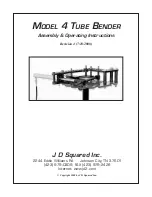
9
Parker Olaer
Accumulator and Cooler Division
Sandycroft, UK
Product Information
Accumulators
Catalogue HY10-4005-UM/UK
Procedure 4. – Transfer Barrier Type fig.5
When precharging transfer barrier accumulators
the precharge pressure should never allow the
fluid volume in the shell to exceed 80% of the
total shell volume when working between max
system pressure P3 and precharge pressure P1.
The method of connecting is as shown in fig.5
and the Procedures 1 or 2 should be followed
depending on the working pressure of the
system.
Routine Maintenance
When a new accumulator has been in service for a short period, the precharge should be checked to
ensure there is no leakage. Subsequent checks need only be at 6 monthly intervals except for very
low pressure applications - CONSULT PARKER OLAER FOR FURTHER INFORMATION
When checking the precharge of an accumulator installed in a system, the accumulator must be
isolated from the system pressure and the fluid removed by carefully opening the bleed valve and
collecting the fluid in a suitable receptacle. Alternatively, shut the system down and release the fluid
pressure back to tank.
Fit a charging set (without charging hose fitted) ensuring the bleed valve is closed and cap is fitted to
the charging connector.
Turn handwheel (10) clockwise and check precharge. NB.
Do not screw down tight.
Replenish if required, following steps of Procedures 1 or 2 appropriately. (see COMMISSIONING)
Servicing
BEFORE CARRYING OUT ANYTHING OTHER THAN ROUTINE MAINTENANCE, CONSULT
PARKER OLAER FOR GUIDANCE IN SERVICING SPECIFIC TYPES OF ACCUMULATORS.
ONLY
COMPETENT PERSONS SHOULD ATTEMPT THIS WORK
Recycling
Before recycling or disposing of an accumulator, depressurise it and remove the gas valve.
Decontaminate if necessary and dispose of in accordance with local regulations.
FIG. 5
Alternative connection when NPRV is not used










































